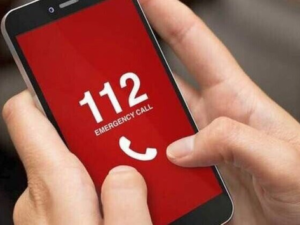
PrJSC Kyiv Confectionery Factory Roshen, a part of Roshen Corporation, intends to increase its authorized capital by 33.2%, or UAH 500 million, to UAH 2.006 billion through an additional share issue.
According to the company’s announcement in the NSSMC’s information disclosure system, the investor will be its subsidiary Confectionery Corporation Roshen, which already owned 96.9017% of the shares at the end of the first quarter of this year.
Taking into account the additional issue, the share of the majority shareholder may reach 97.674%.
It is specified that the shareholders’ meeting will consider the issue of increasing the authorized capital on August 16 this year, in particular, the non-use of the shareholders’ preemptive right to purchase shares of the additional issue and its implementation in one stage.
In total, it is planned to issue 2 billion ordinary registered shares with a par value of UAH 0.25, with the sale price to be determined by the Supervisory Board.
Roshen Corporation is one of the top 30 largest confectionery manufacturers in the world. It includes Kyiv, Kremenchuk, two Vinnytsia confectionery factories and Vinnytsia Dairy Plant, a biscuit complex in Boryspil (Ukraine); Klaipeda Confectionery Factory (Lithuania) and Bonbonetti Choco factory (Hungary). Production activities at the Lipetsk factory (Russia) have been suspended since April 1, 2017.
The corporation produces about 320 types of confectionery products. The total production volume reaches 450 thousand tons of products per year.
Roshen’s network of branded stores in Ukraine includes about 70 stores in different regions of the country. The first one was opened in 2009 in Kyiv.
In 2022, PrJSC Kyiv Confectionery Factory Roshen posted a net loss of UAH 984 thousand compared to UAH 25.779 million in profit a year earlier, while the company’s revenue decreased from UAH 979.286 million to UAH 903.195 million.
The ultimate beneficiary of the company is Oleksiy Poroshenko, the son of former President of Ukraine Petro Poroshenko.

Kyiv will increase funding for security and defense forces in 2023 compared to last year from almost UAH 850 million to over UAH 1.1 billion, Kyiv Mayor Vitali Klitschko has announced.
“This year, Kyiv will allocate more than UAH 1.1 billion to finance the security and defense forces of the capital. This is to help the Armed Forces, border guards, and police. Almost 350 million hryvnias have already been allocated from these funds,” he wrote on his Telegram channel on Thursday.
Klitschko reminded that “last year, Kyiv allocated almost UAH 850 million from the city budget to support the security and defense forces.”
“This money is spent, in particular, on military uniforms, bulletproof vests and helmets. It is also used to purchase drones, radio stations, repair military equipment, and transport. We also send aid to the front line that we raise ourselves – from international partners. We have sent vehicles, drones, Starlink systems, generators, and first aid kits. And we continue to do so,” Klitschko wrote.

During the year of operation from July 2022 to June 2023, 106 thousand sessions were recorded in the Dobrobut mobile application (the number of times the application was used by one client).
Dobrobut told Interfax-Ukraine that 67 thousand sessions were recorded on the iOS system and 39 thousand on the Android system.
On average, the system records 7,500 appointments for services through the app per month, with the most popular service being an appointment for a doctor’s consultation.
On average, a client views 10 pages on iOS or six pages on Android in one session.
In total, 40% of the app’s sessions were used for making an appointment and paying for services, 30% for viewing documents (doctor’s report, test results, etc.), and 30% for searching for a doctor or viewing a doctor’s profile.
Dobrobut Medical Network launched its mobile application in 2016.
The application allows access to digital medical services on the phone: making an appointment with a doctor at any Dobrobut medical center, viewing consulting opinions, research results, paying for services, making an appointment for online doctor’s explanations, and much more.
The app allows you to link medical records of children and other family members to your profile after verification. With the ability to open multiple profiles, you can collect the medical records of the entire family in one place, as well as make appointments and pay for treatment from one account.
The Documents section stores the doctor’s notes made after each visit, consultative conclusions, test results, research, and other medical documents. It is also possible to upload additional user documents, which will be stored in the same section.
“Dobrobut is one of the largest private healthcare networks in Ukraine. The company’s portfolio includes 17 medical centers in Kyiv and Kyiv region, an emergency service, dentistry, and pharmacies. The medical centers of the network provide services for children and adults in more than 75 medical areas. Every year, Dobrobut specialists perform more than 7,000 surgeries. The network employs 2,700 people.
Thanks to cooperation with international charities such as Direct Relief International, Children of War Foundation, International Medical Corps and University of Miami Global Institute, as well as the work of the Dobrobut Foundation, the network’s clinics continued to operate even during the hostilities and provided a significant part of medical services free of charge for months. Since the first days of the war, the Dobrobut Medical and Diagnostic Center in Kyiv has been providing emergency medical care to Ukraine’s defenders and people wounded in the fighting 24/7 free of charge. Thanks to the activities of the charitable foundations Direct Relief International and Dobrobut Foundation, the Dobrobut Medical and Diagnostic Center provides free medical care to wounded soldiers and people in difficult situations due to the hostilities.

An inclusive driving school has started operating in the village of Vita-Poshtova on the basis of the National Academy of Internal Affairs (Educational and Research Institute No. 1), the Kyiv City State Administration reports.
According to a statement on the KCSA website, “at the driving school, people with disabilities can receive services to study theory and gain practical driving skills; pass theoretical and practical exams, and then get a driver’s license.”
If necessary, people can also retrain or acquire the skills to drive a manual car.
In addition, both individual and mixed group training is possible, and it is also possible to learn theory online. The driving school’s curricula are adapted to the needs of people with disabilities, and training and exams will be held in inclusive facilities.
In total, 11 weeks are allocated for training, including 4 weeks of theory and 7 weeks of practice. Up to 30 people study in one group.
To enroll in a driving school, you must pass a medical and social commission and receive a certificate of the cause and group of disability, as well as undergo a medical examination and receive a certificate of fitness to drive.
Next, you need to choose a driving school and submit the required package of documents to the educational institution. This includes an application addressed to the director of the driving school, a copy of the passport of a citizen of Ukraine or an identity document confirming his or her citizenship or special status, a copy of one of the documents provided for by the Tax Code of Ukraine with data on the registration number of the taxpayer’s account card or a notice of refusal to accept it, a medical certificate and a 3.5 x 4.5 cm color photograph.
Driving schools for people with disabilities operate in Kyiv, Khmelnytskyi, Kirovohrad, Lviv and Dnipro regions.

The Ministry of Internal Affairs has fully implemented the 112 service in Kyiv – a single number for all emergencies, the ministry reports.
“The Interior Ministry has fully implemented the 112 service in Kyiv, a single number for all emergencies. The 112 communication center is already processing incoming information and covering the capital,” the Interior Ministry said in a statement on its Telegram channel on Friday.
Reportedly, operators receive calls from citizens. The requests are then forwarded to the necessary units, which respond accordingly. “It is important that operators who speak sign language can communicate with applicants via video call. To do this, you need to send an SMS to 112 and wait for a link to the connection,” the Ministry of Internal Affairs said.
“We promised to launch the service in early July, and we kept our word. Our next steps are to scale 112 first in all cities with a population of over one million, and then to the entire territory of the state,” the statement emphasizes.

Traffic on the two newly constructed exits of the Darnytsia Bridge on the left bank of the Dnipro River towards the Paton Bridge and Osokorky is now open, Deputy Prime Minister and Minister of Communities, Territories and Infrastructure Oleksandr Kubrakov said on Thursday.
“With the opening of the Darnytsia bridge, our fight against long-term construction projects and emergency bridges is not over. Our goal is to see the real state of the bridges and develop concrete solutions to protect the transport infrastructure and maintain its proper condition,” Kubrakov wrote on his Facebook page on Thursday.
According to him, the opening of the exits will allow for a direct connection between the residential areas of Osokorky and Pozniaky and the Kyiv City Express platform and Bereznyaki.
It is specified that the bridge, which is on the balance sheet of Ukrzaliznytsia JSC, was completed at public expense.
As reported, construction on the Darnytskyi Bridge was restarted in 2021. Due to the full-scale invasion in March-April last year, the work was suspended, but resumed in May 2022.
The Darnytsia Bridge has 6 lanes and a capacity of 35 thousand vehicles per day.